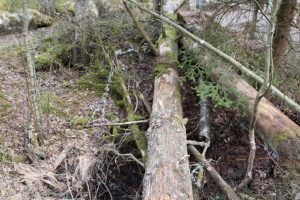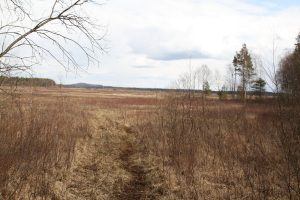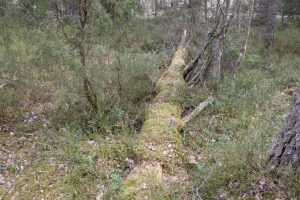Within the EU, and most likely also elsewhere, there is a lot of discussions going on about how much forest land that is protected in the respective countries. Sweden as for an example, report that they have 14 % of its forest land is protected. Germany reports 37 %, and Slovenia 54 %. But are the figures comparable?
Protected forest
What is a protected forest? How is it described in the different countries? A quick look gives no precise answers to this, but it´s obvious that different countries include different types of forest in the concept “protected forest”.
In an article (in Swedish) Pär Lärkeryd, the CEO of the north Swedish forest owner’s association Norra, claims that if the Swedes were to calculate their share of protected forests as the Germans do, Sweden would have 58 % protected forest. And the other way around, if the Germans would count as the Swedes, Germany would have 1 % protected forest.
What is the truth? Why does different countries report figures based on different facts about the same thing? It makes it incomparable!
For Sweden, for forestry people anyway, it´s very annoying to hear that the country is one of the worst in protecting forests in the EU. Especially as forestry/forest industry is one of the financially most important industries in Sweden. So, there is really no wonder that a forest owner´s association reacts like Mr. Lärkeryd does.
What is a protected forest?
According to the Swedish Forest Agency, Skogsstyrelsen, protected forest in described in four categories:
Formally protected forest – National parks, Nature reserves, Nature conservation areas, Habitat protection areas, Nature conservation agreements and Natura 2000 areas. (This is 8,3 % of the total forest land in Sweden).
Voluntary set-asides – Areas of productive forest land that the landowner on voluntary basis keeps outside normal forest management for environmental or cultural protection reasons. (4,3 % of the total forest area.)
Consideration areas – According to the Swedish forestry act environmental and cultural considerations should be taken into account during all actions in the forest. E.g., leaving groups of trees on clear cut sites to make it look less clear, or leaving wet areas in thinning or at clear cuts, or leaving areas around ancient remains untouched, etc. (1,5 % of the total area.)
Unproductive forest land – Forest land that produces/grows less than 1 m3 per hectare and year. (11,6 % of the total area.)
This is the official statistics from the Swedish Forest Agency, made on behalf of the Swedish government and published in June 2019. When summarizing these areas, we see that 25,7 % of the Swedish forest land is protected. But wait …
The figure that Sweden has reported to the EU was 14 %. How come? Well, in that report “Unproductive forest land” is not included in the concept protected forest.
What about German protected forest?
Germany claims to have 37 % protected forest. A protected forest in Germany is “given an additional protection status because of its special importance for the ecosystem.” Most of the protection is based on the forestry-, nature conservation- and water protection acts. So, there is a diversity of protected forest areas that overlaps. Depending on the protection purpose, the description of the protected areas results in different requirements of forest management.
The German forestry act
The forestry act describes the protected area categories “Protected forest” and “recreational forest”.
A protected forest is designated for forest areas that has a special meaning for protection of the environment against negative impact such as air pollution, noise, erosion because of wind and water, drought or avalanche.
A recreational forest is a forest that has a special meaning for recreation for the public. This protection category is found mainly in and close to densely populated areas.
The German nature conservation act
The nature conservation act describes five categories with different targets and legal requirements:
Landscape, in which protection of entire landscapes is the target. This is done through nature parks, landscape protection areas and biosphere reserves. Here both forestry and agriculture are integrated parts as they have formed the cultural landscape for centuries. A little over 50 % of the German forest land gains this kind of protection.
Nature protection areas/biotopes, where special protection is needed for threatened and rare species of flora and fauna. Also in this case forestry and agriculture are integrated parts of the protection, however normally under certain conditions. Approximately 25 % of the German forest land lies under this kind of protection and, most of it, also under the European protection net Natura 2000.
Legally protected biotopes are smaller areas such as wetland, mountain terrain or forests with special tree species. Forestry is normally allowed as long as no impairment is caused to the biotope. About 5 % of the German forest land belongs to this category.
The strongest protection in the German forest you will find in the Core Zones of the National parks. These areas should, as far as possible, be left for free development and the public right to visit these areas is limited. You will find 1,7 % of the German forest land in this category.
The water protection act
Some of the forest land, 2,1 million hectares, is water protection areas. That is 18 % of the total forest land area.
The mathematics
If we add these figures together, we end up with 99,7 % protected forests in Germany. Of course, that is not correct as there is, as mentioned above, an overlap between the different types of protection – one single forest site can belong to two or more protection categories.
I have not managed to figure out where the official 37 % comes from or what type of protection it represents. Therefor it´s difficult to compare with the Swedish protected forests. The hardest protected forests in Germany represents 6,7 % of the total forest land in the country. Maybe you could compare that with the “formally protected forests” in Sweden, that is 8,3 %?
On the other hand, the formally protected forest in Sweden contains Natura 2000 areas that are not included in Germany’s 6,7 % above. Natura 2000 lies under “Nature protection areas/Biotopes” in Germany. A category that represents 25 % of the German forest land, where “most of it” is Natura 2000 areas.
Confusion
Another thing that is confusing is that the only place I have found where both Sweden’s 14 % and Germany’s 37 % are presented in a comparable way, is at protectedplanet.net. But here is referred to the total area of respective country, not only forest land. The figures are presented as shares of land area but when looking into those figures, it turnes out that it is the total area, including water, that is presented in both cases. Here is the page for Sweden and here for Germany.
A comfort in my confusion is that there is a disclaimer saying, “These statistics might differ from those reported officially by countries due to difference in methodologies …”.
As if this wasn´t enough, when digging in this I haven´t found any German information about that 37 % of the forest land should be protected. The only place, except for in Swedish media, where this figure occurs is at protectedplanet.net where the figure is the share of the total area of Germany.
The ? is still there
It seems that it is either a misunderstanding or a coincident that Sweden has 14 % protected area both for the forest land and the total country area. As for Germany’s 37 % … Well, my interpretation is that it actually is the figure for all of Germany as I can´t find that figure in statistics for forest land alone.
The only thing that is clear here is that it is unclear. If you should compare different countries like this, the criteria and frames should be crystal clear. As it is now there is way too much own interpretations of the criteria to make comparisons between countries. Or am I missing something?
The questions are still there: What is a protected forest? How do you describe it?
Sources: norraskog.se, bmel.de, protectedplanet.net, skogsstyrelsen.se, destatis.de
Photos: Per Jonsson















